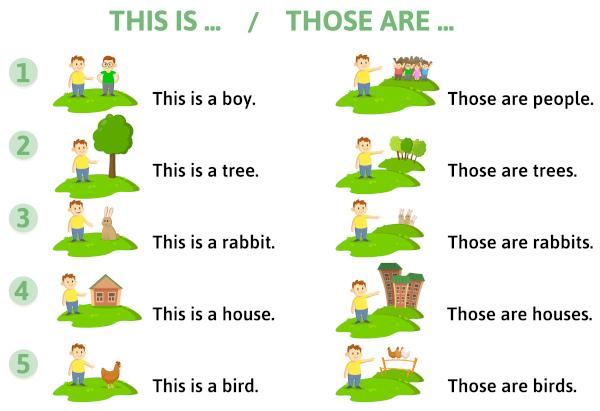Truth table is a logical instrument that contains all the logical values of a compound proposition. The construction of a truth table for a compound proposition involves the logical values of the simple propositions that compose it and the logical operations between these propositions.
Read too: After all, what is logic?
Truth table summary
A truth table is an instrument used in mathematical logic to arrange all the logical values of a compound proposition.
The main logical operations of the truth table are negation (~), conjunction (˄), disjunction (˅), conditional (→) and biconditional (↔).
To construct a truth table for a compound proposition, it is necessary to use the truth tables of fundamental logical operations.
What is the truth table?
Consider P It is q simple propositions, that is, sentences that can be assigned one of the following logical values: true (V) or false (F). A compound proposition formed through operations between P It is q is also a sentence that can be true or false. The logical value of this compound proposition depends on the logical values assigned to
P It is q and the operation(s) between them.The truth table is a table that presents all logical value possibilities for the compound proposition based on the logical values of P It is q.
In this text we will use the letter V to indicate the true logical value of a proposition and the letter F to indicate the false logical value.
Main connectives of the truth table
Logical connectives (or operators) are symbols or words associated with operations that connect a simple proposition with another simple proposition to produce a compound proposition.
There are five main connectives, whose operation, symbol and meaning are indicated in the table below.
Operation |
Symbol |
Meaning |
Denial |
~ |
no |
Conjunction |
˄ |
It is |
Disjunction |
˅ |
or |
Conditional |
→ |
if... then |
Biconditional |
↔ |
if and only if |
How to read:
~ P - "no P”
P ˄ q — “P It is q”
P ˅ q — “P or q”
P→q — “if P then q”
P↔q — “P if and only if q”
Observation: The biconditional is the result of the conditional operation in both directions, that is, P↔q means P→q It is q→P.
How does the truth table work?
The first line of the truth table indicates all the propositions whose logical values we wish to analyze, in addition to the respective operations between them. Each line of the truth table presents the relationship between the logical values of the propositions in the first line.
In order to construct a truth table for any compound proposition, it is necessary to know the truth tables of the fundamental operations, arising from the main logical connectives. Let's see what these truth tables are, obtained by the rules of propositional calculus.
Denial truth table
Given a simple proposition P, the logical value of the proposition ~ P is the opposite of the logical value of P. So, if P It's true ~ P is false; and if P It's fake ~ P it's true.
P |
~p |
V |
F |
F |
V |
Conjunction truth table
Given the propositions P It is q, the logical value of the proposition P ˄ q is true only when both propositions are true.
P |
q |
because |
V |
V |
V |
V |
F |
F |
F |
V |
F |
F |
F |
F |
Disjunction truth table
Given the propositions P It is q, the logical value of the proposition P ˅ q is true when at least one of the propositions is true.
P |
q |
because |
V |
V |
V |
V |
F |
V |
F |
V |
V |
F |
F |
F |
Conditional truth table
Given the propositions P It is q, the logical value of the proposition P→q is false when P is true and q is false and is true in other cases.
P |
q |
p →q |
V |
V |
V |
V |
F |
F |
F |
V |
V |
F |
F |
V |
Biconditional truth table
Given the propositions P It is q, the logical value of the proposition P↔q is true only when both propositions are true or both are false.
P |
q |
P ↔ q |
V |
V |
V |
V |
F |
F |
F |
V |
F |
F |
F |
V |
Construction of the truth table
Based on the truth tables of fundamental operations, we can construct truth tables for any compound proposition. For that we must identify the propositions involved and perform the operations according to the truth tables in the previous topic.
Observation: The number of rows in a truth table of a compound proposition formed by n simple propositions is 2n.
Example: Construct the truth table of the proposition ~ (P ˄ q).
We will use a truth table with four columns: one for the proposition P, one for the proposition q, one for the proposition P ˄ q, and the last one for the final proposition, which is ~ (P ˄ q).
P |
q |
because |
~ (p ˄ q) |
We can fill the first three columns of this table with information from the truth table of the conjunction operation.
P |
q |
because |
~ (p ˄ q) |
V |
V |
V |
|
V |
F |
F |
|
F |
V |
F |
|
F |
F |
F |
Finally, the fourth column is the negation of each logical value in the third column.
P |
q |
because |
~ (p ˄ q) |
V |
V |
V |
F |
V |
F |
F |
V |
F |
V |
F |
V |
F |
F |
F |
V |
Read too: How Aristotle's logic works
Truth table exercises
Question 1
Build the truth table of the proposition ~ (P ˄ ~ q).
Resolution
We will use a truth table with five columns: one for the proposition P, one for the proposition q, one for the proposition ~ q, one for the proposition P ˄ ~ q, and the last for the final proposition, ~ (P ˄ ~ q).
P |
q |
~q |
p ˄ ~ q |
~ (p ˄ ~ q) |
Now just fill in each column and perform the respective operations:
P |
q |
~q |
p ˄ ~ q |
~ (p ˄ ~ q) |
V |
V |
F |
F |
V |
V |
F |
V |
V |
F |
F |
V |
F |
F |
V |
F |
F |
V |
F |
V |
Question 2
Construct the truth table of the proposition ~ P ˅ q → ~ q.
Resolution
We will use a truth table with six columns: one for the proposition P, one for the proposition q, one for the proposition ~ P, one for the proposition ~ q, one for the proposition ~ P ˅ q, and the last for the final proposition, ~ P ˅ q → ~ q.
P |
q |
~p |
~q |
~ p˅ q |
~ p˅ q → ~q |
Now just fill in each column and perform the respective operations:
P |
q |
~p |
~q |
~ p˅ q |
~ p˅ q → ~q |
V |
V |
F |
F |
F |
V |
V |
F |
F |
V |
F |
V |
F |
V |
V |
F |
V |
F |
F |
F |
V |
V |
F |
V |
Sources
ALENCAR FILHO, E. in. Introduction to mathematical logic. São Paulo: Nobel, 2002.
VAZ, R. M. Formalization of logical reasoning based on mathematical logic. Dissertation (Professional Master’s Degree in Mathematics) – Federal University of Mato Grosso do Sul, Três Lagoas, 2014. Available in https://repositorio.ufms.br/handle/123456789/2333 .
Source: Brazil School - https://brasilescola.uol.com.br/matematica/tabela-verdade.htm



